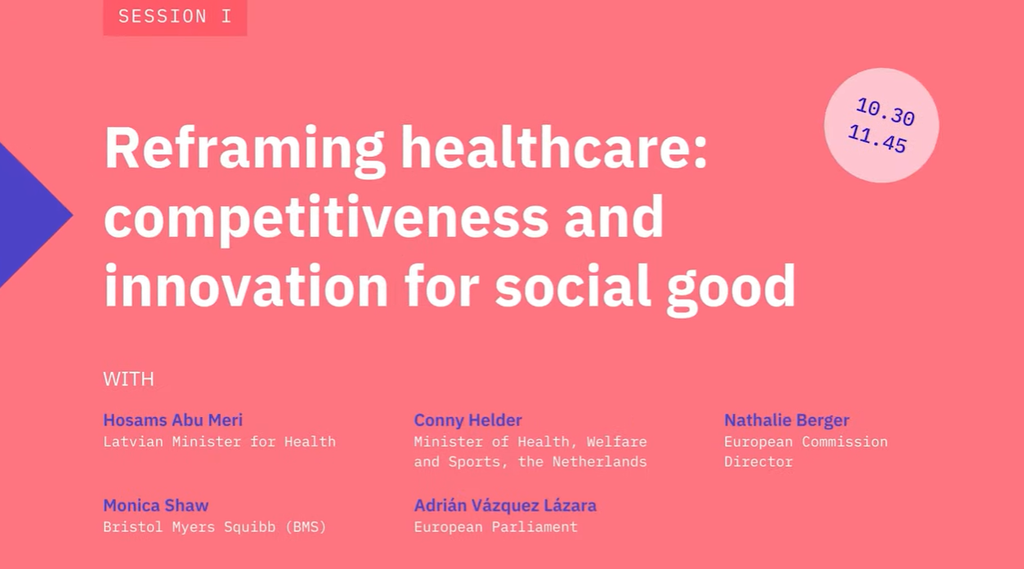Europe's moment: advancing clinical research and health innovation
Next event In person & online

- Area of Expertise
- Sustainable Livelihoods

Santiago Delgado is VP at the Ribera Salud Grupo
When asked to write some words on this topic the first question that came to mind was ‘what do we mean by sustainable’?
The definition of sustainability has been long discussed and it is not my intention to go over it again. But for the sake of clarity, I will equate the concept of sustainability with the conceptual frame defined by The Triple Aim: better healthcare outcomes, better patient experience and more affordable costs.
Speaking about healthcare in Europe is not a simple matter, primarily due to the wide variations in system design and set-up, differences in payment mechanisms, and the roles that the public and private sectors are given within the system. However, it is widely accepted that all European systems are facing very similar challenges, such as an ageing population, a rise in chronic conditions and increasing healthcare costs that keep outpacing national GDP growth.
In addition to these issues system fragmentation most often appears as a huge, seemingly unsurmountable barrier. Nevertheless, by asking ourselves what is best for the citizen, we can design drivers, strategies and courses of action that can help a healthcare system overcome this barrier.
Different providers must act in unison, with a strong focus on healthcare prevention and education
Note the word ‘citizen’, rather than ‘patient’. The Triple Aim concerns the overall state of health of populations; therefore the main focus must be around citizens before they become patients. Different providers must act in unison, with a strong focus on healthcare prevention and education, simply because the citizen/patient remains the same person, while healthcare and prevention are part of a single system.
From our nearly 18 years of experience providing integrated public healthcare, we at Ribera Salud believe that there is a critical factor for success: alignment. Building the new, more integrated system in a seamless and conflict-free manner implies the personal commitment of professionals. This is all about people, after all.
In fact, what healthcare systems around Europe need is a cultural change, a change in the mind-sets of all different stakeholders, shifting the focus towards what really matters: global healthcare outcomes and the wellbeing of the citizens that we serve. This is not simple to achieve, though. This journey is a marathon, not a sprint.
Once we accept that the journey may take time, we may ask ourselves what the (potential) role of the private sector in this process of change could be. ‘Private sector’ is perhaps far too wide an expression. We may need to narrow the scope a little in terms of classifying private companies according to their vision, values and understanding of what it entails to collaborate with governments and the public sector. It is possible for a particular type of private company, with a particular vision and set of values based on long-lasting and loyal collaboration, to act as an enabler for system change.
We can agree on the need for alignment and system integration, as opposed to siloed providers and fragmentation. The right private partner can act as the ‘integrator’ to make the different pieces match together, and as the ‘glue’ to keep those pieces together. A private integrator, compared to a traditional public statutory body, enjoys more flexibility and is able to streamline the decision-making process based on the best practices, in favour of higher efficiency.
In this regard, there are a number of tools that can be put in place more easily through the public-private partnership frame.
First, healthcare integration with shared processes and pathways based on population health management, all of which would be supported by the intensive use of modern, integrated and cross-functional information management and technology solutions.
A private integrator enjoys more flexibility and is able to streamline the decision-making process based on the best practices
Second, a capitation payment system whereby healthcare providers are payed for each enrolled person assigned to them, per period of time, whether or not that person seeks care. This system prioritises what is best for the citizens – staying as healthy as possible for as long as possible – and the payment frame focuses on healthcare quality, not merely financing activity.
Last but not least, we need goals and incentives: it is critical to agree on a shared vision, shared goals and incentives to promote whole system integration.
Needless to say, the deeper the private sector involvement in a public service, the tighter the control mechanisms that must be put in place by the public authority. Quality assurance is a must.
It is widely accepted that costs will continue to increase and that the sustainability of public healthcare systems will remain at risk. New solutions are required and in Europe we can no longer afford to approach public healthcare the way we did 20, 30 or 50 years ago.
Society has evolved, our citizens demand something different and most healthcare systems are falling behind. We all must come up with 21st century solutions for the problems, needs and demands of the 21st century.
Enjoying more stable and coherent healthcare systems across Europe should become a key success factor for the ongoing process of building a future of peace, stability and prosperity. Understanding innovative ways of aligning the public and private interests around what is best for the citizen could be part of the solution.
Next event In person & online

Past event In person & livestreamed

Past event In person

Past event In person & livestreamed





Stay informed
We use cookies and similar technologies to adjust your preferences, analyze traffic and measure the effectiveness of our campaigns. Learn more about our privacy policy.